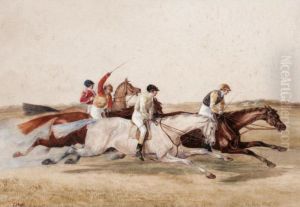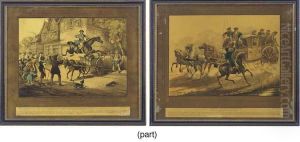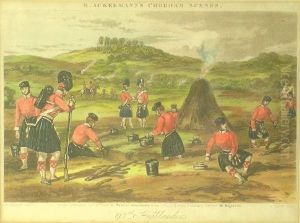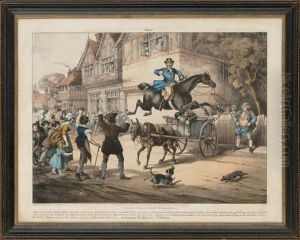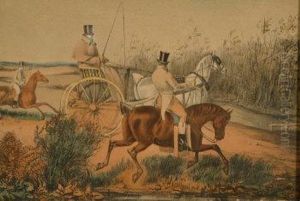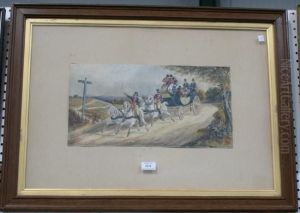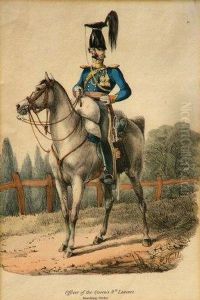Edward Hull Paintings
Edward Hull was a Victorian-era artist known for his works in watercolor and engraving. Born in England in 1829, Hull's artistic career spanned a period of dramatic change in the world of art, coinciding with the rise of the British Empire and the maturation of the Industrial Revolution.
Educated in the arts from a young age, Hull developed his skills in various mediums but became particularly recognized for his proficiency in watercolor painting and engraving. He lived during a time when art was undergoing significant transformations with the emergence of movements like Impressionism and Post-Impressionism, although Hull's work remained mostly within the traditional Victorian style, focusing on landscapes, still lifes, and occasionally on historical or literary themes.
Throughout his lifetime, Edward Hull exhibited his works at prestigious institutions such as the Royal Academy of Arts and the British Institution. His engravings and watercolors were well-received, and he enjoyed the patronage of a clientele that appreciated his attention to detail and his ability to capture the essence of the British countryside and its changing seasons.
Hull was not only a skilled artist but also contributed to the art community through his teachings. He was involved in various art organizations and societies, which played a significant role in the Victorian art scene, fostering the development of young artists and promoting the arts within society.
Edward Hull's death in 1917 marked the end of a career that had spanned nearly seven decades. While he may not be as widely recognized today as some of his contemporaries, his works remain a testament to the artistic styles and sensibilities of the Victorian era. Hull's legacy is preserved in the collections of British museums and in the private collections of those who continue to admire the quiet beauty and craftsmanship of his art.
